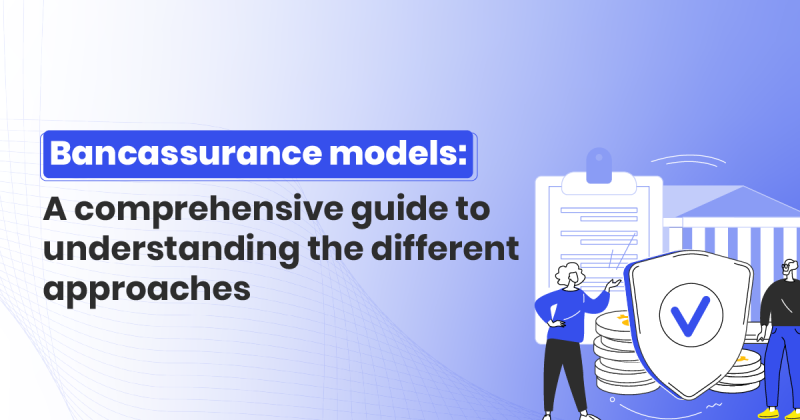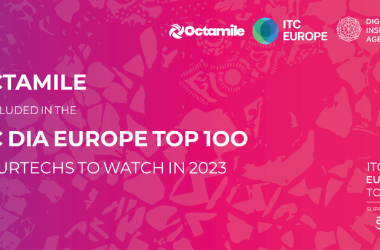In the world of finance, the concept of bancassurance has become a prominent player, merging banking and insurance. Bancassurance, a fusion of “bank” and “insurance,” entails banks offering their customers a comprehensive suite of insurance products and services, effectively transforming into a one-stop financial hub.
In simpler terms, how would you describe bancassurance?
Imagine you walk into your bank to deposit some money. While you’re there, the bank offers you an insurance policy. This is what we call “bancassurance.” It means that in addition to handling your finances, the bank can assist you in obtaining insurance.
Nevertheless, this synergy comes in diverse models, each with its own unique benefits and characteristics. Whether you’re an industry expert, an insurance enthusiast, or just curious, this guide will provide you with a comprehensive understanding of the various bancassurance models and their distinct advantages.
A comprehensive guide to understanding the different bancassurance models
1. Affiliation Model:
In the affiliation model, banks collaborate with insurance companies, primarily focusing on distributing insurance products. Banks play a key role in distribution and typically earn commissions or fees for their services.
The key advantage here is that the bank takes on minimal underwriting risk and earns commissions or fees for its services. The insurance products are typically co-branded with both the bank and insurer logos. However, banks have limited control over product features and pricing, relying on the insurer’s expertise and brand reputation.
What does an Affiliation Bancassurance Model look like? Here is a quick scenario:
Imagine a scenario where Bank X in Nigeria, a financial institution with a large customer base, seeks to broaden its service offerings by providing insurance products to its clientele. However, Bank X is not inclined to venture into the complexities of becoming an insurance underwriter or establishing its own insurance subsidiary. Instead, it embraces the affiliation model.
Bank X enters into a strategic partnership with Insurance Company Y in Nigeria, a well-established insurer with a strong reputation in the market. In this affiliation, the bank agrees to distribute Insurance Company Y’s insurance products to its customers under the insurance company’s brand.
If the customer decides to proceed with the purchase, the insurance policy is issued by Insurance Company Y, and Bank X receives a commission or fee for facilitating the transaction.
This affiliation model allows Bank X to leverage its extensive customer reach, brand recognition, and distribution channels to offer insurance products without taking on the underwriting risk or the complexities of managing an insurance business.
2. Wholesale Model:
In the wholesale model, banks may act as wholesalers, offering insurance products to other financial institutions or brokers. This model gives banks greater control over product customisation, and it can lead to higher profits if the bank underwrites insurance itself or partners with insurers.
Banks may have their underwriting capabilities or work closely with insurance partners, acting as intermediaries or brokers to facilitate insurance sales.
What does a wholesale Bancassurance Model look like? Here is a quick scenario:
Bank X, a financial institution, recognises the potential to expand its offerings by entering the insurance market.
In this approach, Bank X takes on the role of a wholesaler. It offers insurance products, such as auto and property insurance, to other smaller regional banks and local insurance brokers. Bank X can do this in two ways: it may have its own underwriting capabilities or partner with a reputable insurance company.
When smaller regional banks or local insurance brokers seek to provide their customers with insurance options, they turn to Bank X as a trusted source for insurance products. Bank X, in turn, provides these institutions with access to its portfolio of insurance offerings.
This wholesale model benefits Bank X by extending its reach and generating additional revenue streams through the sale of insurance products to smaller banks and brokers. At the same time, it benefits Insurance Company Y by expanding its market presence through the established network of Bank X.
3. Joint venture model
In the joint venture model, banks and insurance companies create a joint entity to offer insurance products. This model capitalises on the shared expertise of both partners, allowing for a balanced risk-sharing.
The joint venture typically enjoys a strong brand presence in the banking and insurance sectors, and the ownership and management of the insurance venture are shared between the bank and insurer.
What does a Joint Venture Bancassurance Model look like? Here is a quick scenario
Bank X, a financial institution, and Insurance Company Y, a well-established insurer, decided to embark on a strategic partnership to create a joint venture entity known as “Bank X & Insurance Company Y Alliance.”
This joint venture represents a distinct corporate entity, wherein both Bank F and Insurance Company G have equal ownership and management responsibilities. Through this alliance, the partners intend to offer their customers a broad range of insurance products and services, leveraging the strengths of banking and insurance expertise.
The joint venture entity, Bank F & Insurance Company G Alliance, operates independently and benefits from a shared pool of resources, including capital, expertise, and brand recognition. This partnership allows for seamless integration of banking and insurance operations, resulting in innovative cross-selling opportunities and comprehensive financial solutions for customers.
This entity combines the best of both worlds, offering customers a holistic and integrated approach to their financial needs while the bank and insurance company share the risks and rewards of this collaborative endeavour.
4. The Insurance Referral Model
In the referral model of bancassurance, banks act as intermediaries by referring their customers to an insurance company. When a customer expresses interest in insurance, the bank provides them with information about the insurance products and directs them to the insurance company’s sales team.
While the bank does not directly sell insurance, it earns a commission for each successful referral. This model allows banks to focus on their core banking activities while still benefiting from the revenue generated through insurance referrals.
5. Product Distribution Model
Under the product distribution model, banks seamlessly integrate insurance products into their existing distribution channels, often combining insurance with core banking services. The aim is to make insurance products easily accessible to customers. Insurance products are available online and at physical bank branches, and cross-selling is actively pursued.
Bank J’s customers in Nigeria or any location around the world can easily access these insurance products through traditional bank branches and online banking platforms.
In a physical branch, a customer visiting for banking needs can also explore insurance options, with trained staff ready to assist and provide information.
Online, customers can easily purchase insurance policies and manage their coverage, all within the same online banking portal.
The bank actively promotes cross-selling opportunities, encouraging its staff to inform customers about the available insurance products during their banking transactions.
Bancassurance is a financial model that evolves as the financial services industry changes. Understanding the various bancassurance models and their respective advantages and characteristics is crucial for banks, insurance companies, and customers. These models allow for flexibility and innovation, ultimately benefiting customers by offering a wide range of insurance options through their trusted banks, notwithstanding location: Nigeria, Africa, and around the world.
We have simplified launching insurance products for fintech apps and banks. Providus Bank, VeendHQ, KrediBank, Payforce by CrowdForce and Breeze Business Banking rely on our API to integrate credit life insurance, marine insurance, money insurance, and other customisable insurance products for consumers.
Launch embedded insurance products in minutes, not months; work with us; schedule a meeting here.









